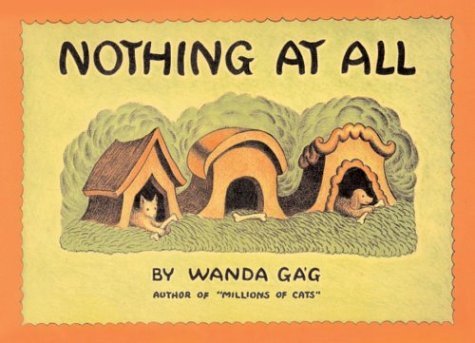A class action by families of the victims of a serial killer in South Korea. Complaints that the freezer quip is insensitive should be directed to Paul Karlsgodt.
CPSIA: Library books under an orange tarp
It’s happening at the Morton James Public Library in Nebraska City, Neb.:
A federal child product safety law has staff at the Morton James Public Library quarantining books behind bright orange plastic and wondering how many must be pulled forever from the shelves. …
Over 1,000 books with 1985 or older on the copyright page have already been quarantined behind an orange curtain.
Library Director Barbara Hegr said librarians will try to determine if the edition is a printing after the copyright date, so the book may be preserved.
Click through to the news story at the Nebraska City News-Press for more details, as well as a photo you may not soon forget. You can also Digg the story here.
CPSIA: Importing older children’s books
You didn’t think they were going to make it that easy, did you?
On February 10, 2009 we have added a Shipping Restriction for our Childrens Books, as follows: Effective February 10, 2009 Children’s Books will no longer be shipped to the USA. This change is being made because of the United States Consumer Product Safety Act (CPSIA). … We have added “SHIPPING NOT AVAILABLE TO THE USA” to the description of the books affected by this shipping restriction.
— announcement at Canada-based online used-book seller Trylinski Books.
Relatedly, on the domestic front: “The fun is over” says online vintage seller “Scribbler”, who’s pulling her stock of pre-1985 kids’ books, and yet feels optimistic: “I have to think the government will do the right thing over the next few months and alter this crazy law to make vintage kids’ books legal again, so I don’t expect to be out of business too too long.” (She’s also giving away to a random post-commenter a post-’85 reprint of a book by one of my favorite children’s illustrators, Wanda Gag.) Occasional eBay/Craigslist reseller jensyw tries to puzzle out the law’s requirements. More: Freddie DeBoer/League of Ordinary Gentlemen (“such a terrible, horrible, no good, very bad law”), Buried Treasure, Allison Kasic/Independent Women’s Forum. And @swonderful, on Twitter: “At consignment store they were disposing of pre-1985 books. The employee remarked how she will throw out all old books at home too.” After all, who knows better than the government?
More: Great coverage by Daniel Kalder in the Guardian (U.K.) Books Blog.

Kentucky fen-phen fee scandal retrial
The retrial of disbarred lawyers William Gallion and Shirley Cunningham began this week after an earlier jury deadlocked; a third defendant, Melbourne Mills, Jr., was acquitted. The three had diverted to their own use large portions of a $200 million settlement fund for fen-phen plaintiffs. We’ve covered the seedy saga in depth since it hit the headlines.
Patent trolls as a tax on innovation
The well-known venture capitalist Fred Wilson has his say. And Red Hat wants to enlist the public’s help in stopping the country’s allegedly most litigious patent troll by documenting prior art “on a user interface that has multiple workspaces. Hard to say just what they mean (which is often a problem in software patents), but it sounds a lot like functionality that pretty much all programmers and consumers use”.
Inside Counsel magazine on punitive damages
Inside Counsel magazine’s March 2009 issue quotes me (and mentions this blog) in a story about punitive damages and a Third Circuit ruling imposing a 1-to-1 limit on punitive damages in a bad-faith-failure-to-settle case, Jurinko v. Medical Protective Co. (albeit in a mysteriously unpublished decision). (Lauren Williamson, “Court Imposes 1-to-1 Punitive Damages Ratio”, Inside Counsel, March 2009; see also Shannon P. Duffy, “3rd Circuit Slashes Punitives, Imposes 1-1 Ratio”, Legal Intelligencer, Dec. 30.) I do take issue with the line “The decision continues a trend of appeals courts beginning to rein in punitive damage awards when there is no physical injury or ‘reprehensible’ behavior.” A 1-to-1 ratio isn’t “reining in” punitive damages awards in such cases, because just a generation ago, the ratio for such situations was zero-to-one, because punitive damages were to be limited to intentional or particularly reprehensible conduct. As I feared a few months ago, the 1-to-1 ratio “ceiling” the Supreme Court suggested in Exxon Shipping v. Baker has become a benchmark.
The magazine also has a short interview with Andrew Frey, the Mayer Brown litigator who has argued several Supreme Court punitive damages cases.
“Firm offers ’60 Minute divorce’, free lunch included”
Uncontested ones with no issues over money or kids only, though, please.
“If you too have driven a car into a pool…”
Why the more marketing-oriented sorts of law firm blogs often tend to read so strangely [Jamie Spencer, Austin Criminal Defense]
Vicki Iseman settles New York Times suit
Both sides claim victory in the defamation action, which arose from insinuations the paper made about the lobbyist’s close ties to Arizona Sen. John McCain. [Calderone/Politico, earlier]
Art and the law: “Against moral rights”
“My argument is that moral rights laws endanger art in the name of protecting it”. [Amy Adler (NYU Law), 97 California Law Review (Feb.) (PDF), via ConcurOp] The best-known American application of the moral-rights concept in art is the Visual Artists Rights Act of 1990, which (among other provisions) gives visual artists a right to sue in some circumstances if later lawful owners of their artworks alter or destroy the works.
